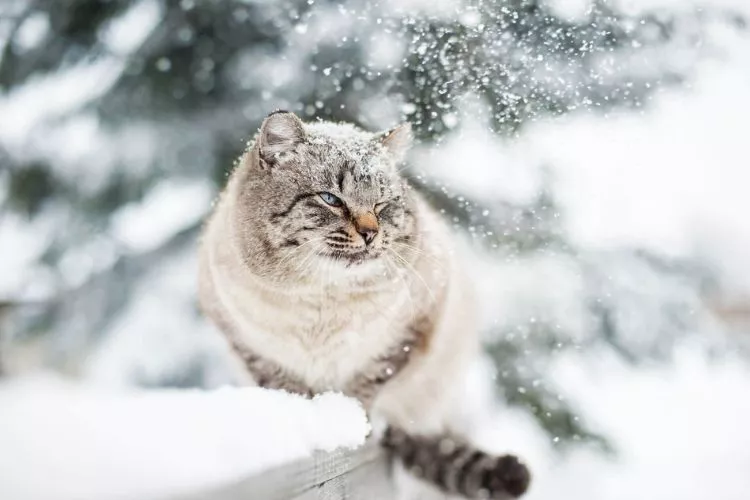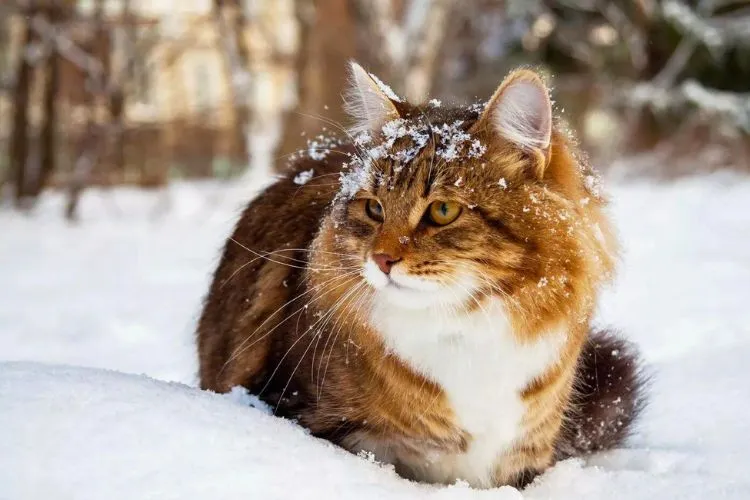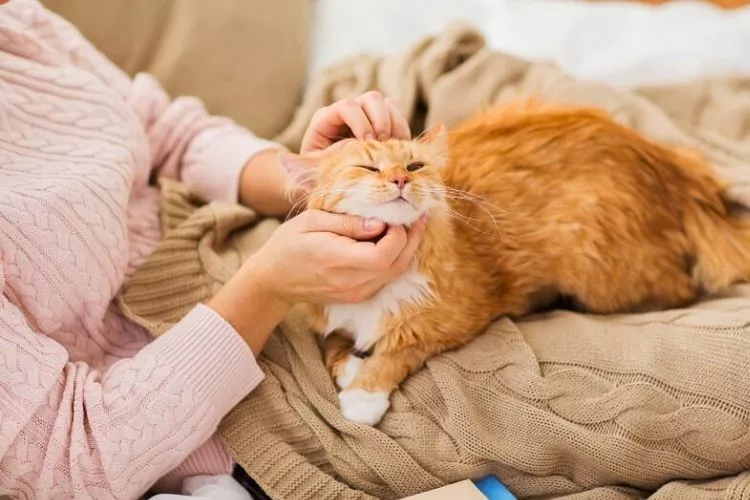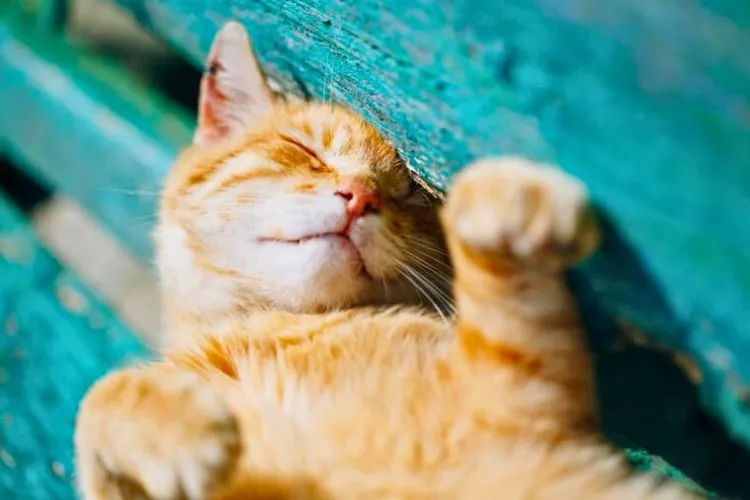Cats are one of the most loved pets of the world, and we as a cat owner always want to keep our babies safe and sound from any kind of trouble.
But, do cats like the cold or heat? That’s a million dollar question which needs to be answered to clear the confusion.
Originating from desert-dwelling ancestors, cats are inherently adapted to warmer climates. Their unique physiological traits, such as fur thickness and sweat glands, assist in regulating their body temperature.
Yet, their preferences aren’t as straightforward as they may seem. Cats, sensitive to temperature changes, often seek warmth during colder months, finding solace in cozy spots like sunny patches or warm blankets.
Regardless, providing a balance of warm and cool areas is crucial, offering cats the freedom to select their preferred environment.

Tools like heating pads or cooling mats can further aid their comfort, allowing them to self-regulate their body temperature effectively.
🐾 Do cats like the cold or heat?
Cats generally prefer warmer temperatures. Descended from desert-dwelling wildcats, they are adapted to hot climates. Their thick fur helps retain warmth, making cooler temperatures uncomfortable.
However, they cannot tolerate extreme heat. Cats usually seek out warm places but can get overheated. Therefore, a temperature-controlled environment of around 70-80 degrees Fahrenheit is ideal.
Providing options for warm and slightly cooler spots within this range is recommended. Remember, it’s important to observe your cat’s behavior as preferences vary slightly between cats.
Despite the generally observed preference, it’s crucial to remember that every cat is an individual with unique behaviors and comfort levels.
Beyond evolutionary adaptations, factors like upbringing, health, coat length, and age influence their temperature preference.
For example, a long-haired cat may tolerate cool temperatures better than a short-haired one. Similarly, senior cats or those with health issues might seek warmth more frequently.
Observing your pet’s daily habits, like where they choose to sleep or spend time, can give insights into their comfort zones.
Regularly monitoring and adapting to their environment will help ensure their well-being.
🐾 What temp is too cold for cats?
The ideal temperature for cats is between 77°F (25°C) and 86°F (30°C). That being said, most healthy adult cats can comfortably tolerate cooler temperatures as low as 59°F (15°C).

However, a good rule of thumb for indoor environments is to keep the temperature around 70°F to maintain a cat’s body temperature optimally; cats can manage temperatures as low as 50°F with proper warm bedding.
Remember individual differences among cats and observe your cat’s behavior to understand its comfort levels.
🐾 How can I tell if my cat is cold?
Determining if a cat is cold involves observing several physical and behavioral signs. If your cat’s ears, paws, and tail end feel cold to touch, it might be a sign that your feline friend is feeling cold, as these parts of the body lose heat first when the temperature drops.
Another noticeable sign could be a change in their usual spots – if they’re huddling near heat sources like radiators, it might indicate they’re chilly.
Cats experiencing mild hypothermia (body temperature of 90-99°F) may exhibit signs such as weakness, shivering, and lack of mental alertness.
Moderate hypothermia (82-90°F) could be indicated by muscle stiffness, low blood pressure, unresponsiveness, and slow, shallow breathing. In severe cases (under 82°F), fixed and dilated pupils can be observed.
A cat’s body position can also be indicative. For example, cats feeling cold may adopt a hunched posture or tuck their limbs close to their bodies, presumably to conserve energy.
🐾 What temperature do indoor cats like?
Indoor cats typically prefer a temperature range of 65°F to 75°F. However, this range can vary depending on factors like species and age. Observing your cat’s behavior and habits is important to determine their comfort levels.

As cats can handle warmer temperatures with proper air circulation, adjusting your indoor environment accordingly can help keep your cats comfortable.
🐾 Ideal room temperature for cats in winter
The ideal room temperature for cats in winter varies between 77°F to 86°F. Maintaining the temperature within this range allows the cat to maintain its body temperature naturally.
However, sustaining such temperatures might not be financially practical for many pet owners during colder months. It’s important to note that cats still maintain a comfortable body temperature if your home’s indoor temperature is above 50-60°F.
While adjusting indoor temperature, observe your cat’s comfort to determine the most suitable temperature for your pet in winter.
🐾 What temperature is too hot for cats indoors?
Indoor cats generally prefer temperatures around 65°F to 75°F. However, they can tolerate warmer temperatures up to around 86°F to 88°F with proper air circulation and access to fresh water.

Ensuring your cat has shaded areas and cool spots to rest when temperatures rise indoors is important. Cats may begin experiencing discomfort when temperatures exceed 80°F.
🐾 Additional Tips for Keeping Cats Comfortable in Different Temperatures
Ensuring your cat remains comfortable during temperature fluctuations involves more than just adjusting your thermostat.
Cats are sensitive creatures, and small changes in their environment can impact their well-being. Below are additional tips to ensure your cat stays cozy regardless of the season.
Providing Warmth in Cold Weather
During colder months, cats instinctively seek warm spots. To make your home more cat-friendly in winter:
- Heated Beds and Blankets: Invest in a heated cat bed or place cozy blankets in their favorite resting areas.
- Sunny Spots: Ensure your cat has access to sunny windowsills during daylight hours.
- Draft-Free Zones: Keep your cat’s bed away from drafty doors or windows.
- Warm Clothing: For short-haired or senior cats, cat sweaters can provide extra warmth.
- Safe Heating Devices: If you use space heaters, make sure they are pet-safe and monitored.
Keeping Cats Cool in Hot Weather
In warmer climates or summer months, cats are at risk of overheating. Here are some tips to keep them cool:
- Hydration is Key: Provide multiple water bowls around the house and consider a cat water fountain to encourage drinking.
- Cooling Mats: Cooling pads or mats designed for pets can offer a refreshing place to rest.
- Shaded Areas: Ensure there are shaded areas indoors where your cat can escape the heat.
- Air Circulation: Use fans or air conditioning to maintain airflow.
- Grooming: Regular brushing can help remove excess fur, especially for long-haired cats.
Recognizing Signs of Discomfort
Cats are experts at hiding discomfort, so it’s important to observe their behavior. Signs of overheating include excessive panting, lethargy, drooling, or seeking cooler spots like tile floors.
In colder weather, shivering, curling into a tight ball, or avoiding movement may indicate discomfort.
Adapting to Your Cat’s Preferences
Every cat is unique, and their temperature preferences can vary. Pay attention to where your cat chooses to rest—whether it’s a sunlit spot on the floor or a shaded corner of a room. By providing a variety of warm and cool spaces, you empower your cat to regulate its body temperature naturally.
Understanding these seasonal needs and adjusting your cat’s environment accordingly will ensure they remain healthy, happy, and comfortable year-round.
Conclusion :
While cats have a wide range of acceptable temperatures, they favor moderate climates like humans. The winning temperature for our feline friends tends to range somewhere between 65°F to 75°F.
However, they can tolerate warmer temperatures up to about 86°F to 88°F, given they have access to fresh water and places to cool down.
They do not typically favor cold, with discomfort starting around 50°F.
Whether they prefer the warmth or the chill depends on individual cats, their breed, age, and health. Even so, in extreme weather, cats, like humans, face the risk of illness due to overheating or hypothermia.
Therefore, it is paramount that cat owners remain vigilant of the signs of discomfort and distress in their pets and regulate the temperature of their homes accordingly.
